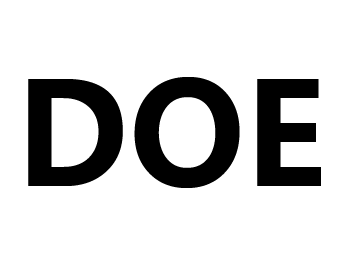
DOE Certification
The United States federal regulations (10 CFR 430) have clearly stipulated that all external power supply units entering the United States market should reach the minimum energy efficiency level: level IV and be clearly marked on the product. Not only that, but also manufacturers and brands are required to submit two important statements to DOE. The first is the compliance statement that the product meets the energy efficiency requirements of the federal regulations, and the second is the first certificate report of the product. Both documents must be sent to the Department of Energy (DOE) by mail. The document preparation shall be completed according to the format published by DOE, and the certificate report can be submitted by a third party on behalf of the manufacturer/brand. The information reported in the document shall cover the product class, manufacturer/brand name, efficiency (%), no-load power consumption (W) and rated output power (W) of each single model.
Standard basis
US Federal Regulations: 10CFR429 and 10CFR430.
10CFR429 specifies the sample selection specification and report specification;
10CFR430 specifies the test method and declaration of conformity;
What are the mandatory DOE certification of bulbs in North America?
DOE regulations are mandatory certification requirements for entering the North American market.
The United States Department of Energy (DOE) issued the “Notice of Regulatory Proposal (NOPR) Draft Version on Bulb Test Methods” on February 26, 2016, proposing to issue the Notice of Regulatory Proposal for General Lighting Bulbs (GSL
General Service Lamps refers to the new test method of incandescent lamps, CFLs, LEDs, OLEDs and other bulb products that can replace traditional lighting bulbs.
Description of DOE regulations
The final regulation establishes the test procedure for LED bulbs, and provides corresponding test methods as a supporting document for the FTC mandatory marking test. The regulation mainly introduces the test methods and requirements for LED bulbs, luminous flux, power, luminous efficiency, color temperature CCT, color rendering index CRI, power factor PF, life and standby power. The regulations mainly refer to four important industry standards, as follows:
IEC62301Edition2.0,2011-01
Test of standby power:
IESLM-79-08 photoelectric performance test;
IESLM-84-14 Lamp lumen maintenance and color maintenance test;
IESTM-28-14 Calculation of bulb failure life;
The regulation mainly introduces the test methods and requirements of LED bulbs, luminous flux, power, luminous efficiency, color temperature CCT, color rendering index CRI, power factor PF, life and standby power, in which LM84 standard is used.
DOE focuses on the following:
- The LM80 report is not accepted, and the LM84 test method is adopted, that is, the entire LED bulb should be aged, and the data should be recorded every 1000H.
- After LM84 collects data, TM-28 is used to calculate the life. The calculation method is as follows:;
Test time ≤ 3000H, declared life=test time. If 3000H is tested, the declared life can only be 3000H
3000 < test time < 6000H, declared life+(test time ÷ 600-4) × Test time. If 4500H is tested, the claimed life can only be 15000H test time ≥ 6000H claimed life=test time × 6。 If 6000H is tested, the declared life is 36000H.
